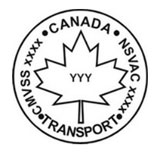Car seat resources are available in many languages. Visit
translated resources to see which documents, videos, and languages are available.
Alberta law
According to the law in Alberta, the driver must make sure passengers under 16 years of age are buckled up correctly.
For children under 18 kg (40 lb.) and under 6 years of age the law says:
- an appropriate child safety seat must be used
- the child safety seat must be correctly installed in the vehicle
- the child must be properly secured into the seat
Using a car seat properly can reduce the risk of injury by up to 82% and risk of death by up to 71%.
Car seat stages
There are 3 basic types or stages of car seats for children:
-
rear-facing (car seat and child faces the back of the car)
-
forward-facing (car seat and child faces the front of the car)
-
booster (booster seat and child faces the front of the car)
Many seats combine more than one stage. It is safest to keep your child in each stage for as long as possible.
View the printable
Is your child in the right car seat? for a 1-page overview of which type of seat to use for your child.
The video and the “Is your child in the right car seat?” overview
 have been translated into many different languages. See which
other languages are available.
have been translated into many different languages. See which
other languages are available.Rear-facing car seats
- Infants and young children are safest riding in a rear-facing car seat until they reach the maximum height or weight limit for the rear-facing seat use allowed by the manufacturer. Find these limits on the car seat’s stickers or in the instruction manual.
- Rear-facing car seats include infant (rear-facing only) car seats, as well as larger rear-facing car seats that you can change from a rear-facing car seat to a forward-facing car seat as your child grows. Learn more about
infant (rear-facing only) car seats and
rear-facing car seats.
- When your baby outgrows an infant (rear-facing only) car seat, move them into a larger rear-facing car seat. Your child is safest in the larger rear-facing car seat until they are 2, 3, or even 4 years old, as long as they are still under the maximum height or weight limit for rear-facing use.
- A rear-facing car seat provides the best protection for a child’s head, neck, and spine in a sudden stop or crash.
Don’t rush to move your child into a forward-facing car seat. The rear-facing position is the safest.
Forward-facing car seats
- When your child outgrows their larger rear-facing car seat by height or weight, they should move to a forward-facing car seat. Learn more about
forward-facing car seats.
- Forward-facing car seats include the larger rear-facing seats that you can change to a forward-facing car seat as your child grows. They also include car seats that can change from a forward-facing car seat into a booster seat.
- Use a forward-facing car seat until your child reaches that seat’s maximum height or weight limit for the harness. Find these limits on the car seat’s stickers or in the instruction manual.
- Some forward-facing seats can be used for children weighing up to 30 kg (65 lb.).
Booster seats
An adult seat belt alone does not properly fit a child’s body—it rides too high on the belly and neck. This can cause serious injuries in a crash. A booster seat helps the seat belt safely fit a child’s body.
- When your child outgrows their forward-facing car seat by height or weight, they should move to a booster seat. Learn more about
booster seats.
- Your child is safest in a booster seat until they reach the maximum height or weight limit of the booster seat. Find these limits on the booster seat’s stickers or in the instruction manual.
- Use a booster seat until the vehicle’s lap-shoulder seat belt fits properly. This is typically when your child is 145 cm (4 ft. 9 in.) tall and between 8 and 12 years of age. Learn
when your child is ready for a seat belt alone.
Is your car seat or booster seat safe to use?
Whatever car seat stage your child is in, these checks will help you decide if the seat is safe to use:
- Check that your seat is approved for use in Canada. Look for the National Safety Mark on the car seat or booster seat.

- Read the labels and instructions to make sure your child is within the height, weight, and age limits for the seat.
- If your seat is second-hand, make sure you have all of the parts, including the instruction booklet.
- Know the history of the seat. Most seats must be replaced after a crash, even a minor one.
- Check
Transport Canada’s website for recalls.
- Check the expiry date on your seat. All car seats and booster seats expire.
See the checklist:
Getting Started: Is your car seat or booster seat safe to use? for more information.
Make every ride a safe ride
- Read the instructions that came with your car seat or booster seat and the instructions in your vehicle owner’s manual.
- Use these resources to help you install and use your car seat or booster seat correctly:
As a parent or caregiver, you can learn the knowledge and skills to transport your child safely.
Other languages
Car seat information
عربي (Arabic)
دری (Dari)
English
فارسی (Farsi)
Français (French)
नेपाली (Nepali)
Русский (Russian)
简体中文 (Simplified Chinese/Mandarin)
Af-Soomaali (Somali)
Kiswahili (Swahili)
ትግርኛ (Tigrinya)
Українська (Ukrainian)
